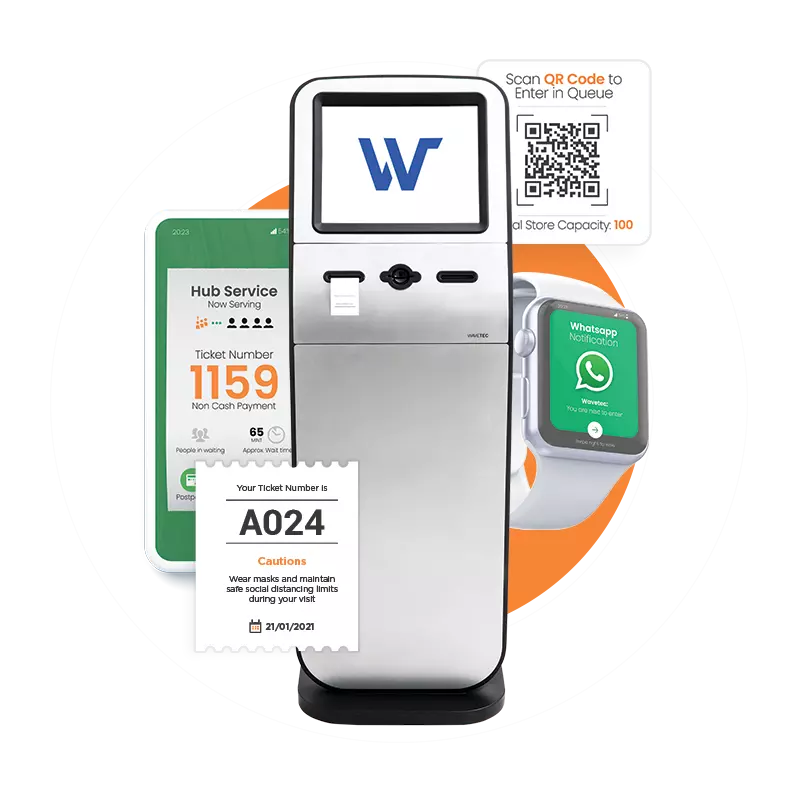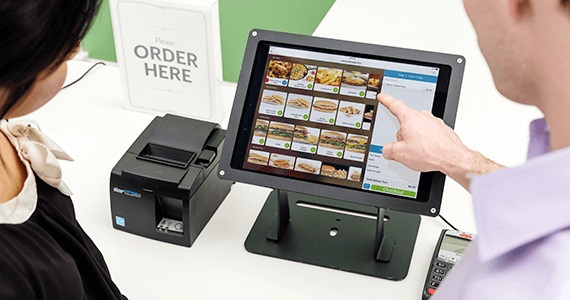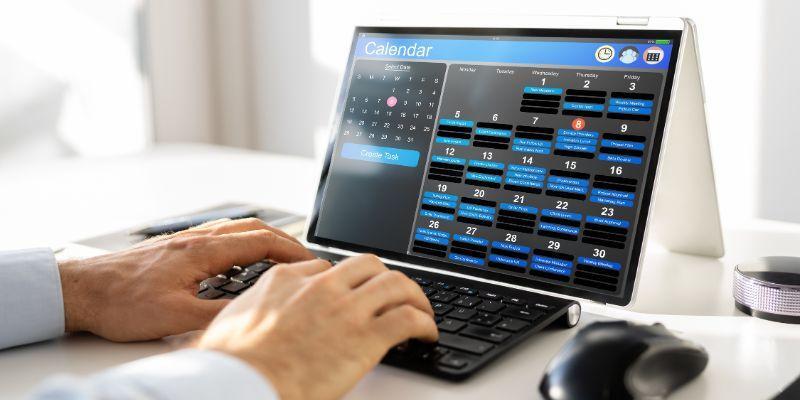In today’s fast-paced retail landscape, customer satisfaction is paramount. Discover how a Retail Queue Management System can transform your store’s dynamics, enhancing customer experiences while boosting operational productivity.
The Components of Retail Queue Management Systems
In the retail sector, efficient customer service is crucial. Retail Queue Management Systems play a significant role in enhancing this efficiency. These systems consist of customer-facing and staff-facing components, each contributing to a smoother shopping experience.
Customer-Facing Components
Imagine entering a store and seeing a clear sign indicating where to stand and how long your wait will be. That’s the power of retail queue management solutions.
These solutions use digital displays to guide customers, minimizing confusion and frustration. With easy-to-understand instructions, customers can use their time better and have a more pleasant shopping experience.
Staff-Facing Components
Retail queuing solutions are more than just helpful for customers; they also assist store staff. These systems provide a behind-the-scenes dashboard that keeps staff informed about queue lengths, customer flow, and waiting times.
This data empowers staff to make informed decisions, like opening new checkout lines during busy periods. It streamlines operations and ensures that the store runs efficiently, benefiting both customers and staff.
Benefits of Implementing a Retail Queue Management System

When it comes to contemporary retail, customer satisfaction holds the utmost importance. Adopting a Retail Queue Management System is a logical approach to this concern.
This approach to retail queue management brings forth a host of advantages, catering to the needs of both customers and staff members. Let’s dive into the tangible benefits arising from incorporating this system.
1. Improved Customer Experience
When businesses aim to create a better shopping experience, a Retail Digital Queue Management System can help. It achieves this by making waiting times shorter for customers and by keeping them engaged.
This is done through smart strategies that lessen the perceived waiting time. Additionally, the system values customer feedback to enhance its performance and create a more enjoyable shopping environment for everyone.
Reduced Perceived Wait Times
Waiting in lines is not enjoyable for anyone. Yet, a Retail Queue Management System changes this perception. By displaying engaging content on screens, customers’ attention is diverted, making the wait seem less lengthy. This mechanism offers an effective solution to the challenge of linear queuing.
Increased Engagement through Digital Experiences
The presence of screens displaying videos or useful information during wait times is a result of the retail customer queueing systems. This approach keeps customers engaged, preventing boredom. This heightened engagement makes waiting a more pleasant experience overall.
2. Enhanced Operational Efficiency
In business, working efficiently is critical. Enter the Retail Queueing Management Solution. It’s like a helper that makes things run better. By using data it helps decide when to have more staff and makes planning smarter. Let’s see how this adds to enhanced operational efficiency.
Optimized Staff Allocation
Having the right number of staff members at the right time is important for businesses. A Retail Queueing Management Solution helps with this.
It uses data from the Retail Queue Display System to see how many customers are waiting. This way, businesses know when they need more staff and when they don’t. It’s like a smart helper for staffing.
Data-Driven Insights for Resource Planning
Planning resources, like staff and time, is a big part of running a business. With a Retail Queueing Management Solution, things get easier. It collects data from the system and uses data analytics to find patterns. These patterns show busy times and slow times. Businesses then plan better, so they’re ready for anything.
3. Social Distancing and Safety Compliance
Safety is a top concern for businesses, especially during challenging times like pandemics. Ensuring a secure shopping environment becomes crucial.
This is where effective strategies like managing foot traffic using People Counting come into play. Let’s explore how businesses can use people Counting solutions (part of the retail queue management system) to manage foot traffic during pandemics and create a safe shopping environment for everyone.
Managing Foot Traffic during Pandemics
Pandemics require careful measures to keep people safe. With People Counting solutions, businesses can do just that. These solutions act like digital trackers, keeping an eye on how many people enter and leave a store.
By doing this, they help control the number of customers inside, making sure there’s enough space for everyone to maintain a safe distance.
Ensuring a Secure Shopping Environment
Creating a safe shopping space is vital for both customers and businesses. People Counting plays a significant role here.
By accurately monitoring the flow of people, these solutions help businesses prevent overcrowding. This ensures that customers can shop with confidence, knowing that the store is taking the necessary steps to maintain their safety.
Integration with Technology and Data Analytics

In the world of business, using technology to make things better is a smart move. When it comes to a retail queue management system, technology and data analytics are like powerful tools that work together.
Let’s explore how integrating IoT sensors, data collection, artificial intelligence, and machine learning can enhance the way retail queue management systems function.
1. IoT Sensors and Data Collection:
Imagine sensors that can collect data from the environment. These sensors, known as IoT sensors, are a game-changer for retail queue management solutions. They can track how many people are in a store and even measure how long they wait. This data helps businesses understand customer patterns and improve service.
2. Artificial Intelligence and Machine Learning:
Artificial Intelligence (AI) and Machine Learning (ML) are like brainy helpers for retail queue management. They can analyze the data collected by IoT sensors and find patterns. This helps businesses make smart decisions, like when to open more checkout lanes during busy times. AI and ML make the retail experience smoother for everyone.
Retail Queue Management System – FAQs
Can A Retail Queue Management System Be Integrated with Existing Technology?
Yes, Retail Queue Management Systems can be integrated with existing technology, making it easier for businesses to adapt and enhance their customer service.
How Does a Retail Queue Management System Enhance Customer Experience?
A Retail Queue Management System reduces wait times, provides clear information, and increases overall customer satisfaction by ensuring smoother and more organized queues.
What Role Does Data Analytics Play in Retail Queue Management Systems?
Data analytics in Retail Queue Management Systems help businesses understand customer flow, peak times, and preferences, enabling them to make informed decisions for better queue management and customer service.
Final Words
In the modern retail landscape, a Retail Queue Management System stands as a pivotal solution for promoting operational efficiency and elevating customer satisfaction. Seamlessly integrating with existing technology, this system optimizes resource allocation through data analytics, granting insights into customer behavior for informed decision-making.
By easing wait times and offering clear guidance, the system significantly enhances customer experiences. Additionally, its expert management of foot traffic ensures a secure and orderly shopping environment, which is particularly crucial in uncertain times.
In essence, the Retail Queue Management System exceeds being a mere technology; it emerges as an asset that matches businesses with current shopping demands. Its role in strengthening both customer experience and operational efficacy sets its essential position within the retail landscape.
BOOK A FREE DEMO





